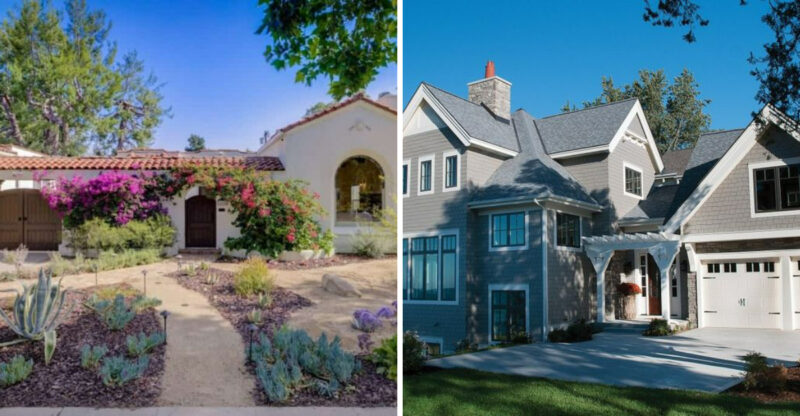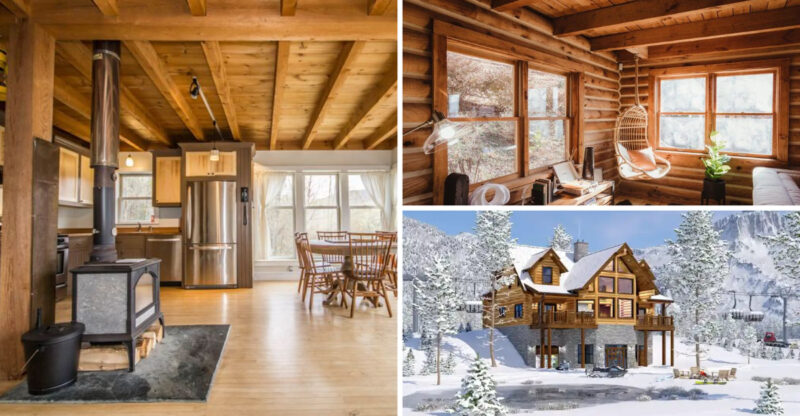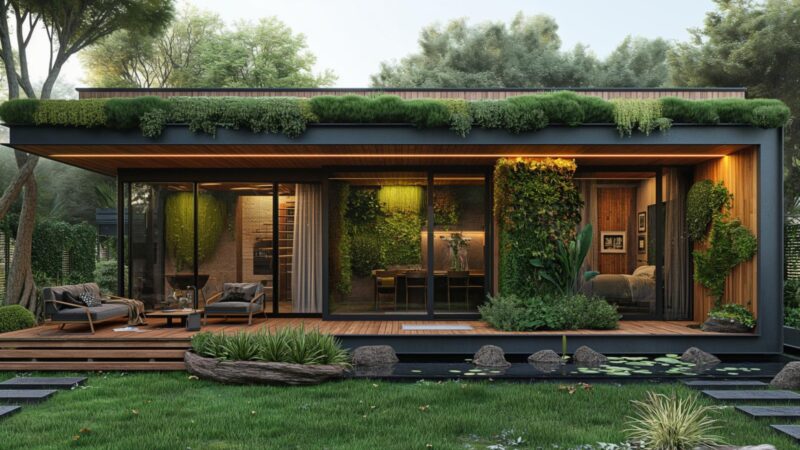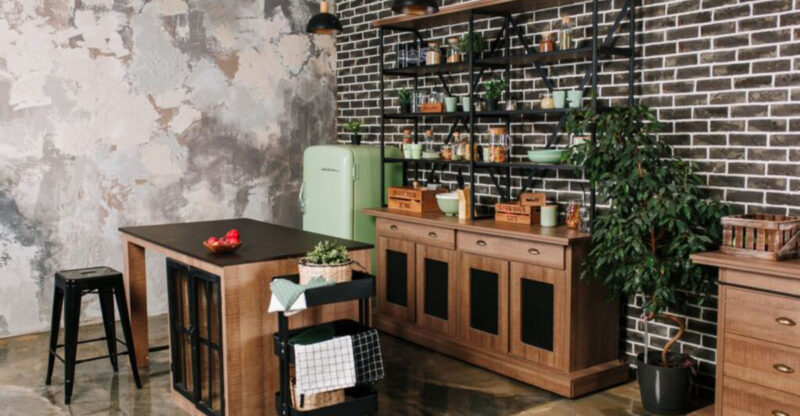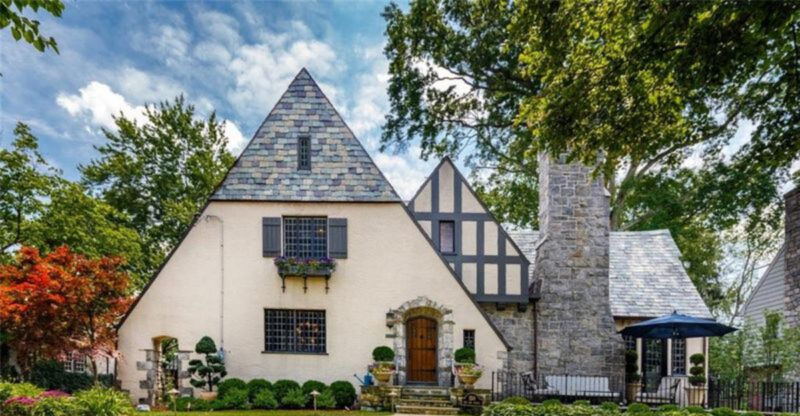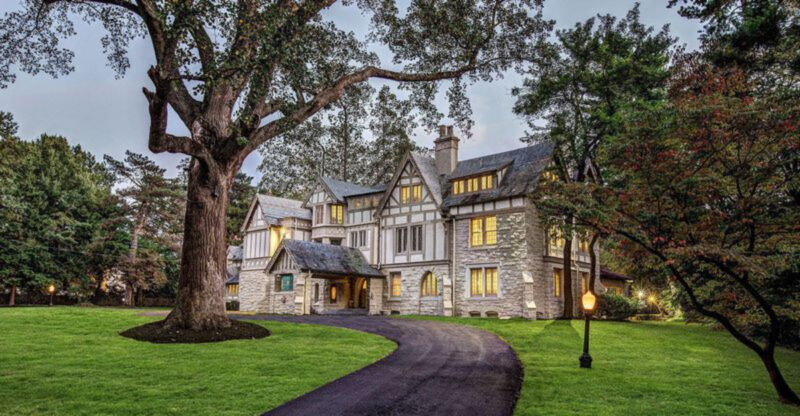In My Experience These 10 Home Trends Will Devalue Properties By 2025 And These 5 Already Have
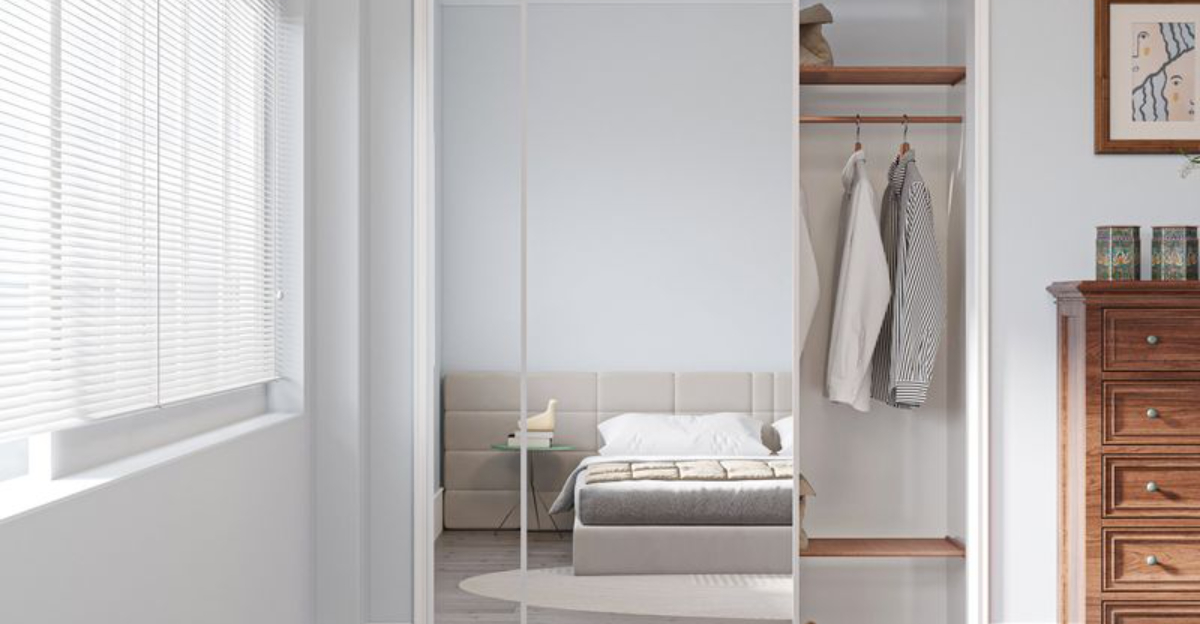
Home design trends come and go, but some leave a lasting impact on property values and not always in a good way.
As a real estate professional for over 15 years, I’ve witnessed firsthand how certain design choices can significantly decrease a home’s market appeal.
While some trends are already dragging down property values, others are on track to become financial liabilities by 2025.
1. All-White Interiors
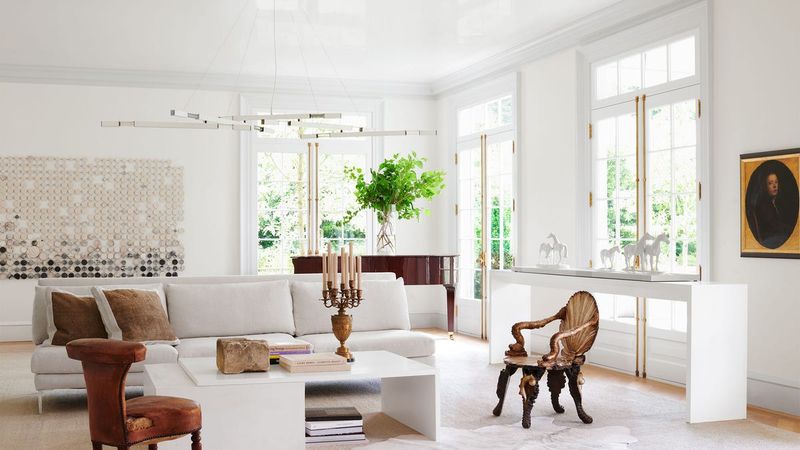
White-on-white interiors looked fresh and modern a few years ago, but the clinical aesthetic is rapidly losing its appeal. Potential buyers increasingly view these spaces as high-maintenance nightmares rather than clean, sophisticated environments.
Kids, pets, and everyday living quickly transform pristine white surfaces into dingy, marked-up walls and furniture. The constant cleaning and frequent repainting required creates a financial burden most homebuyers want to avoid.
By 2025, expect all-white rooms to be seen as dated rather than timeless. Homes embracing warmer neutrals and thoughtful color will maintain value better than their sterile, all-white counterparts that scream “2010s design trend.”
2. Barn Doors
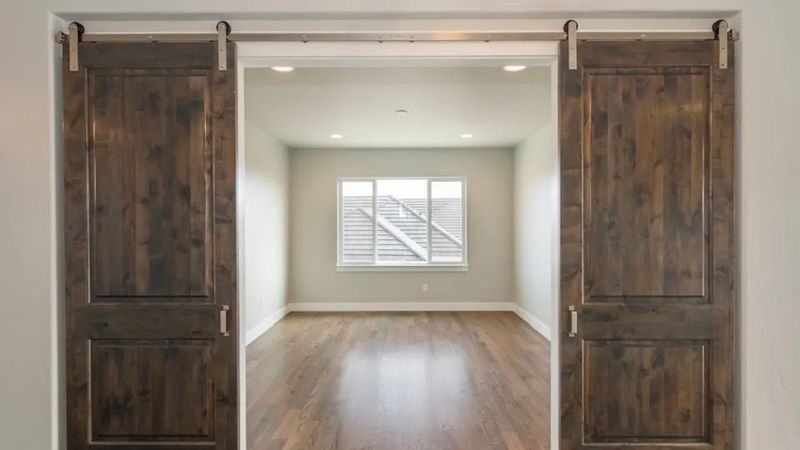
Barn doors exploded in popularity thanks to farmhouse-style renovation shows, but their practical limitations are becoming increasingly apparent to homebuyers. These sliding doors offer minimal privacy, with visible gaps and poor sound insulation making them problematic for bathrooms and bedrooms.
Hardware issues frequently develop as tracks collect dust and doors slip off their rollers. The rustic aesthetic also clashes dramatically with most architectural styles, creating a jarring disconnect in homes not designed with farmhouse elements.
Forward-thinking buyers already view barn doors as a replacement project rather than a selling point. By 2025, these doors will be firmly categorized alongside other short-lived trends that actually decrease property values.
3. Open Shelving Overload
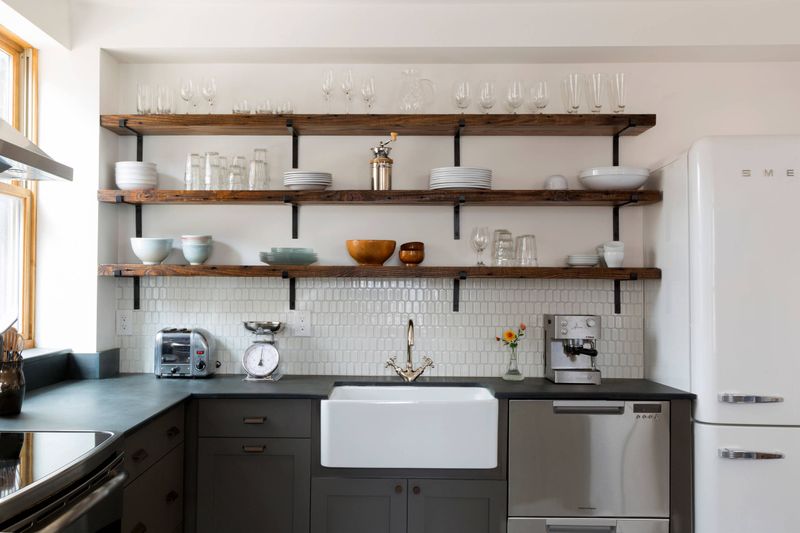
Open kitchen shelving initially promised a breezy, accessible alternative to traditional cabinets. Reality tells a different story. Homeowners quickly discover these shelves collect grease, dust, and require constant styling to avoid looking cluttered.
Practical storage space is significantly reduced, forcing everyday items into lower cabinets or pantries. Most families simply don’t own enough aesthetically pleasing dishware to fill multiple open shelves attractively.
Buyers increasingly recognize that open shelving photographs well but functions poorly. By 2025, kitchens with predominantly open shelving will be viewed as impractical renovation projects requiring immediate attention, dragging down offer prices and extending market time for sellers unfortunate enough to have embraced this impractical trend.
4. Vessel Sinks
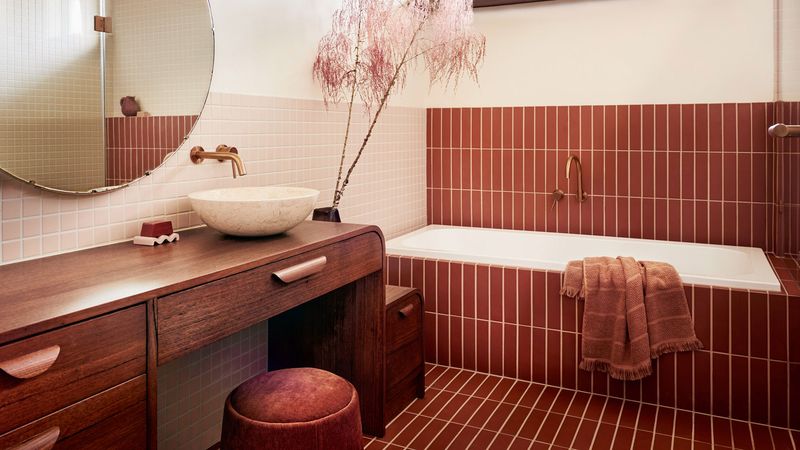
Vessel sinks – those bowl-shaped basins that sit atop counters – initially made a splash as luxury bathroom statements. Their impracticality quickly becomes apparent through daily use, with awkward heights causing back strain and uncomfortable washing experiences.
Water inevitably splashes everywhere, creating constant cleaning headaches around sink areas. The connection point between sink and counter collects grime and often develops leaks or loose fittings over time.
Young families particularly dislike these fixtures, finding them impossible for children to use independently. As millennial and Gen Z buyers dominate the market by 2025, vessel sinks will be viewed as immediate replacement projects rather than desirable features, significantly impacting bathroom remodel calculations and overall property valuations.
5. Wall-to-Wall Carpeting
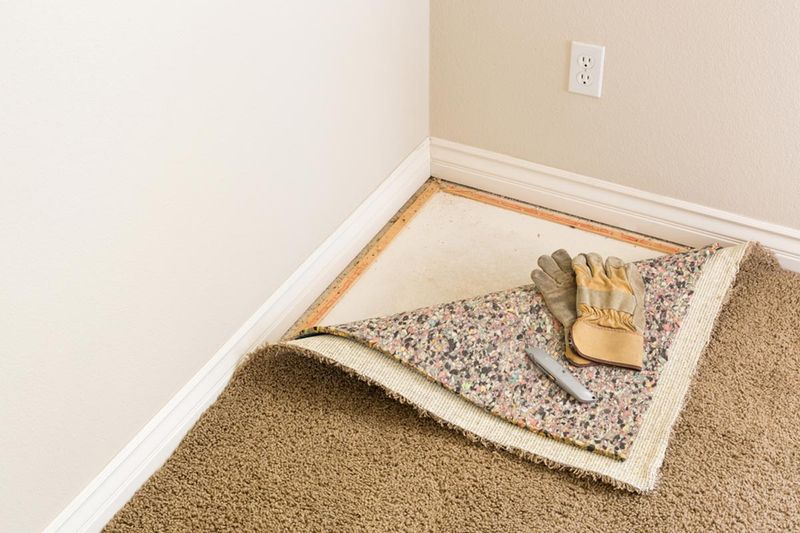
Wall-to-wall carpeting continues its steady march toward obsolescence as hardwood and luxury vinyl dominate flooring preferences. Modern buyers immediately calculate carpet removal costs when touring carpeted homes, viewing it as harboring allergens, stains, and odors from previous occupants.
Maintenance challenges make carpeting particularly problematic in high-traffic areas. Even professional cleaning can’t fully restore carpets after years of use, leaving them looking perpetually tired despite homeowners’ best efforts.
Homes featuring extensive carpeting will face increasingly steep market penalties by 2025, especially in dining areas, entryways, and kitchens. Properties with hardwood hiding underneath may recoup some value, but those with concrete subfloors face significant renovation costs that directly impact purchase offers.
6. Bold Wallpaper Everywhere
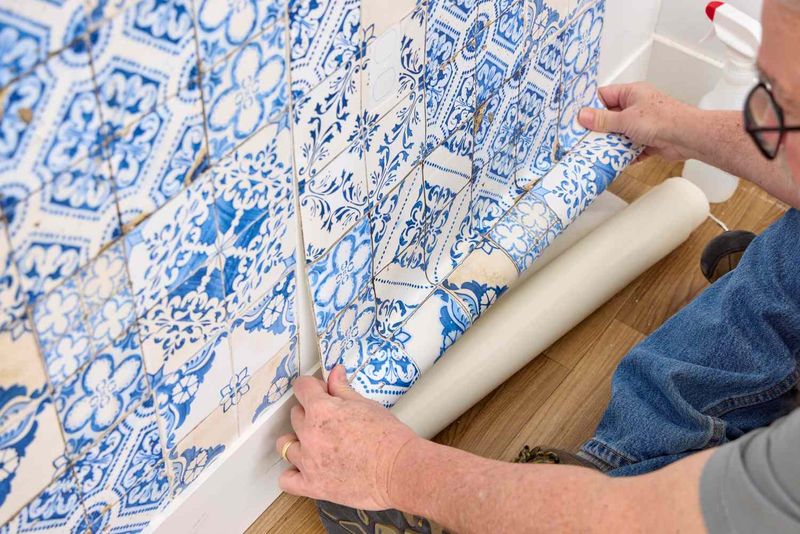
Statement wallpaper in every room represents one of today’s fastest-growing yet soon-to-be-regretted design choices. While a single accent wall might remain timeless, homes covered in bold patterns quickly feel overwhelming and dated as trends evolve.
Removal costs significantly impact property valuations. Modern wallpapers often prove surprisingly difficult to remove without damaging underlying drywall, creating expensive remediation projects for new owners.
Highly personalized patterns particularly diminish broad market appeal. What seems stylish to one homeowner often appears jarring to potential buyers, who immediately mentally subtract removal costs from offer prices. By 2025, extensively wallpapered homes will struggle to compete against properties with more neutral, timeless finishes that allow buyers to envision their own personal touches.
7. Faux Shiplap Walls
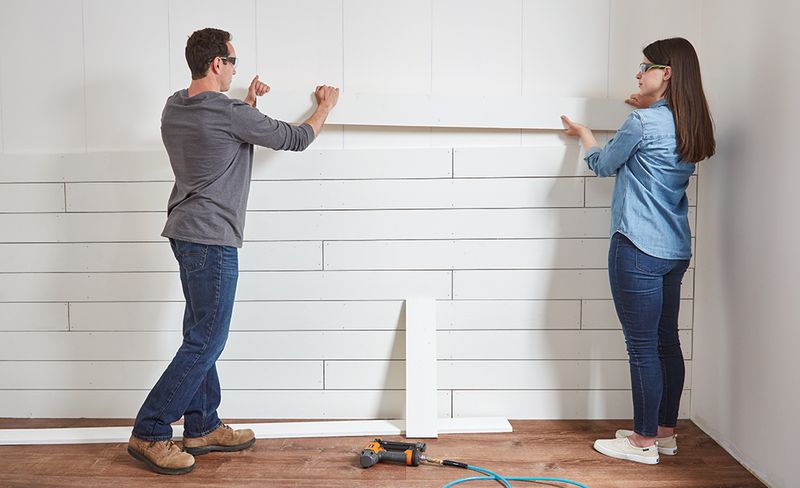
Faux shiplap – those DIY wood planks nailed directly to drywall emerged as an affordable way to capture farmhouse charm. Unfortunately, amateur installation often results in visibly uneven spacing, poorly finished edges, and obvious seams that scream “weekend project” rather than quality craftsmanship.
Moisture issues frequently develop behind improperly sealed planks, creating hidden mold problems. Dust collection between boards creates an ongoing cleaning challenge that many homeowners hadn’t anticipated when installing.
Buyers increasingly recognize the difference between authentic architectural details and trendy imitations. By 2025, homes featuring extensive faux shiplap will be viewed as dated renovation projects requiring immediate attention, with property values reflecting the anticipated removal costs and potential remediation of underlying wall damage.
8. Dark Painted Cabinets
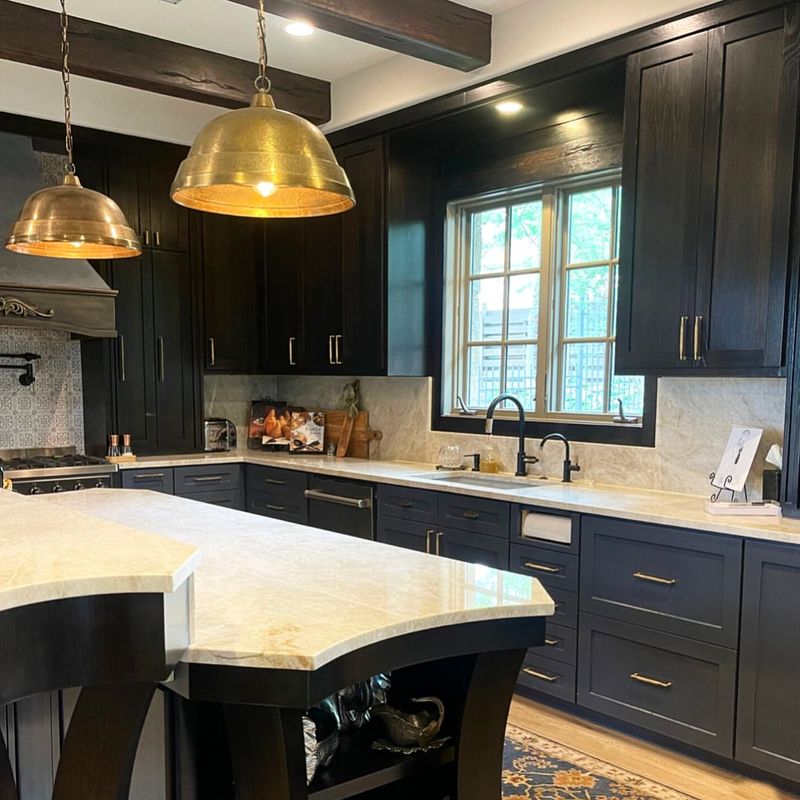
Navy and black cabinets surged in popularity as homeowners sought alternatives to all-white kitchens. Unfortunately, these dark hues quickly show every fingerprint, dust particle, and water splash, creating constant cleaning demands that wear on even the most diligent homeowners.
Light limitations pose another significant problem. Dark cabinets absorb rather than reflect light, making kitchens feel smaller and more confined – the opposite of what most buyers seek.
Touch-up challenges emerge as painted finishes chip and wear at edges and handles. Unlike wood tones that disguise minor damage, dark paints highlight every imperfection. By 2025, homes with dark cabinetry will likely face market resistance as buyers calculate repainting costs, with properties featuring more timeless finishes commanding higher prices and faster sales.
9. Overly Industrial Decor
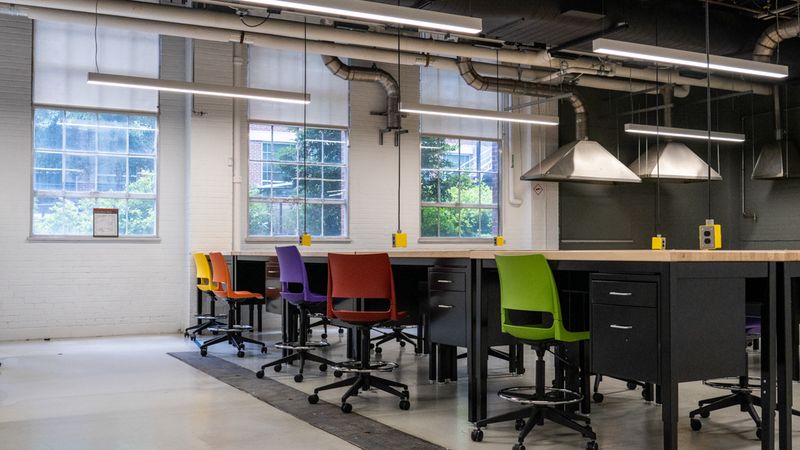
Industrial-style homes featuring exposed ductwork, concrete floors, and metal fixtures initially attracted buyers seeking urban loft aesthetics. The appeal quickly fades when residents confront the practical challenges of living with these design elements.
Acoustic problems rank among the most significant complaints. Hard surfaces create echo chambers that amplify every sound, while exposed mechanical systems often generate unexpected noise. Temperature regulation becomes problematic without traditional insulation methods.
Maintenance issues emerge as concrete develops cracks and exposed pipes show corrosion. By 2025, expect heavily industrial-styled homes to face significant market resistance outside urban centers, with buyers increasingly prioritizing comfort and livability over aesthetic statements. Properties that balanced industrial elements with traditional comforts will maintain value better than their aggressively industrial counterparts.
10. Giant Whirlpool Tubs
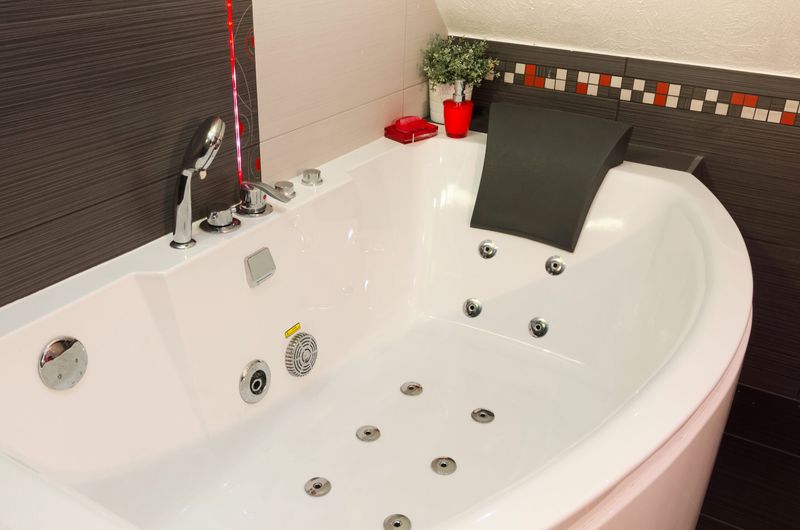
Massive jetted tubs dominated master bathroom wish lists in the early 2000s. Today’s buyers view these water-guzzling fixtures with increasing skepticism, recognizing the impracticality of filling a 100+ gallon tub for daily use.
Maintenance headaches further diminish appeal. Jets collect bacteria and mold when not regularly cleaned with specialized products, while mechanical components frequently require expensive repairs as they age.
Space utilization concerns round out buyer objections. These oversized tubs consume valuable bathroom square footage that could otherwise accommodate larger showers or storage. By 2025, homes featuring giant whirlpool tubs will face market penalties as sustainability-minded buyers calculate removal costs and water savings, preferring properties with spacious walk-in showers and more modest soaking tubs that balance luxury with practicality.
11. Popcorn Ceilings (already devaluing)
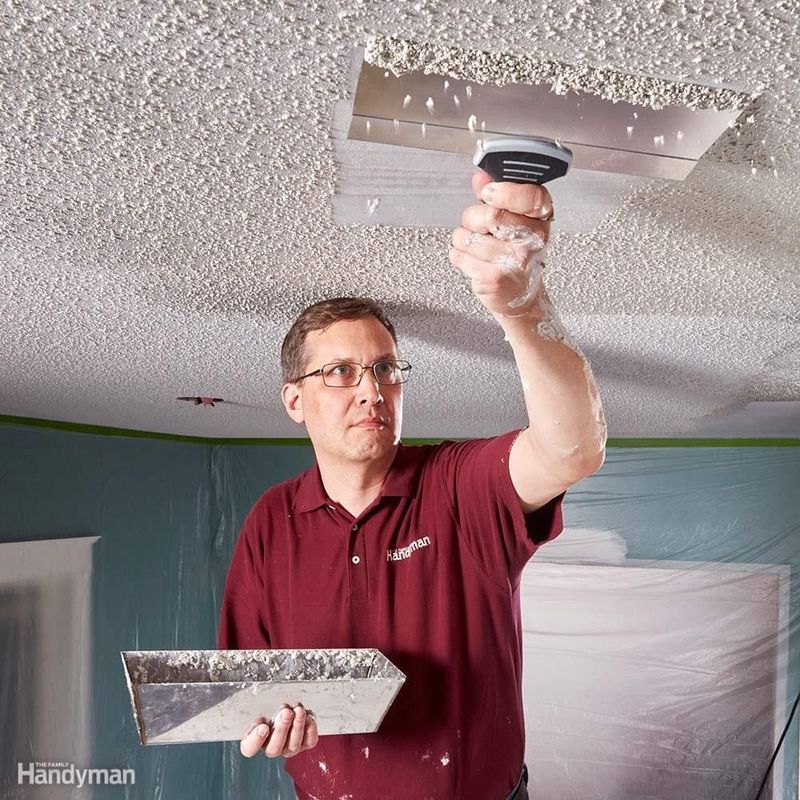
Popcorn ceilings continue their reign as one of America’s most universally despised home features. Beyond their dated appearance, these textured surfaces collect dust, create shadows, and prove nearly impossible to clean without causing damage.
Health concerns amplify buyer resistance. Pre-1980s popcorn ceilings often contain asbestos, requiring professional testing and potentially costly remediation before removal. Even asbestos-free versions present removal challenges that typically require professional services.
The mere presence of popcorn ceilings signals to buyers that a home hasn’t been updated in decades. Properties featuring these textured nightmares already face significant market penalties, with buyers immediately calculating removal costs (typically $1-3 per square foot) and subtracting this amount from offer prices, assuming they don’t bypass the property entirely.
12. Glass Block Walls (already devaluing)
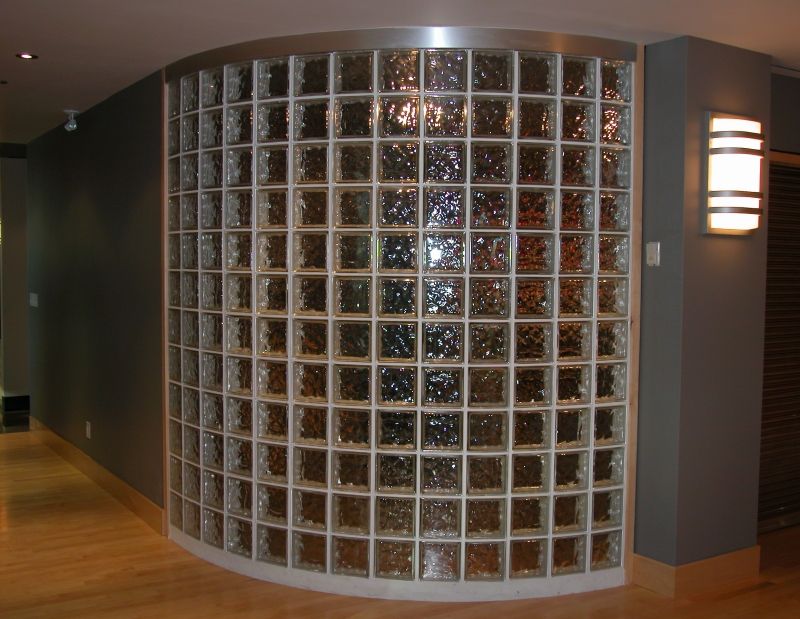
Glass block walls, once considered modern and innovative, now serve as immediate indicators of dated bathrooms and basements. Their translucent nature provides neither true privacy nor clear views, creating an awkward middle ground that satisfies neither function.
Cleaning challenges frustrate homeowners as dust and moisture collect in impossible-to-reach crevices between blocks. Replacing these features involves major construction, as they’re typically installed as structural elements rather than simple dividers.
Energy efficiency concerns further diminish appeal. Glass blocks provide poor insulation compared to modern alternatives, creating cold spots in winter and heat traps in summer. Current buyers already view glass block walls as immediate renovation projects rather than selling points, with properties featuring these dated elements commanding lower prices than comparable homes with updated materials.
13. Mirrored Closet Doors (already devaluing)
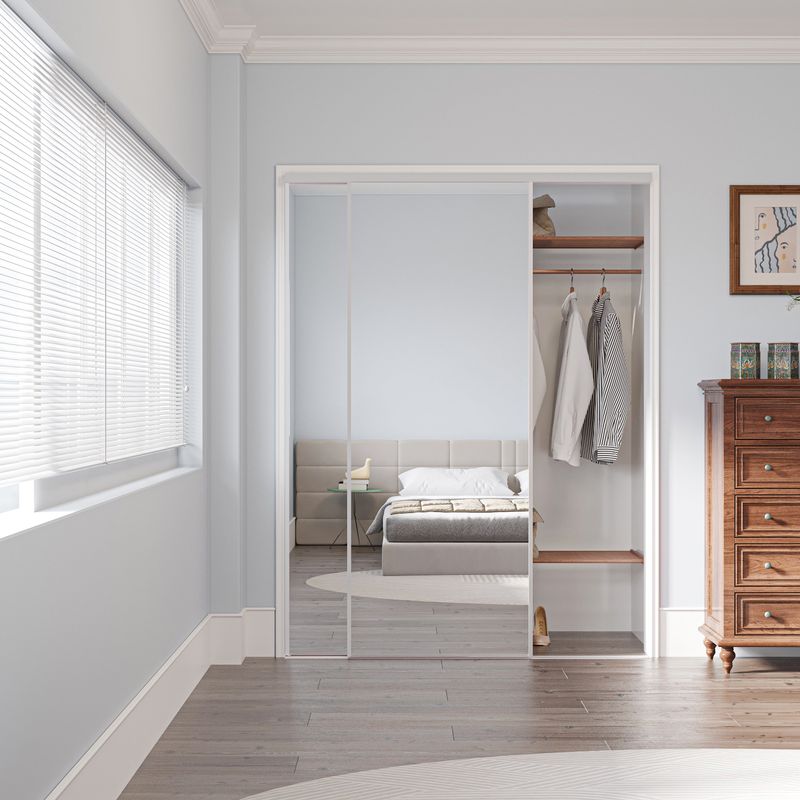
Mirrored closet doors epitomize 1980s design choices that actively repel today’s buyers. These floor-to-ceiling reflective surfaces immediately date a bedroom, creating a jarring visual throwback that overwhelms otherwise updated spaces.
Functionality issues compound aesthetic concerns. Tracks frequently jam or derail, while mirror panels chip at edges and corners. Fingerprints and smudges require constant cleaning to maintain an acceptable appearance.
Safety worries particularly concern parents of young children, who view these large, untempered glass panels as potential hazards. Current buyers already calculate door replacement costs when viewing homes with mirrored closets, typically allocating $250-500 per door in their mental renovation budgets. Properties featuring these dated fixtures consistently receive lower offers than comparable homes with updated closet doors.
14. Carpeted Bathrooms (already devaluing)
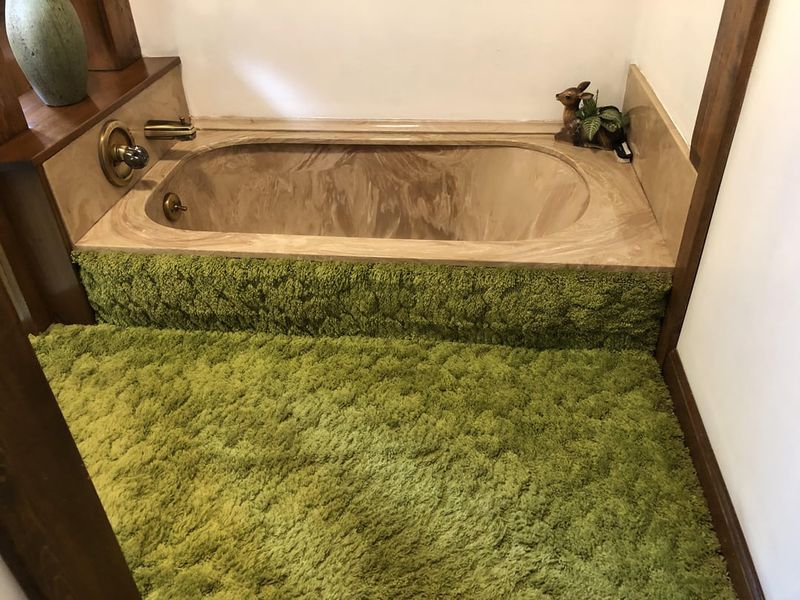
Carpeted bathrooms represent perhaps the most universally rejected home feature among today’s buyers. Moisture inevitably leads to mildew and mold growth beneath the surface, creating health hazards that new owners want no part of.
Odor issues develop quickly and prove nearly impossible to eliminate. Even with regular cleaning, bathroom carpets absorb and retain unpleasant smells that permeate the entire room.
Sanitation concerns rightfully disturb potential buyers, who recognize that bathroom carpets harbor bacteria in ways that hard surfaces don’t. Homes still featuring carpeted bathrooms face immediate and significant market penalties, with buyers automatically deducting flooring replacement costs from offer prices. Many potential buyers simply eliminate these properties from consideration entirely, unwilling to deal with the perceived grossness factor.
15. Vertical Blinds (already devaluing)
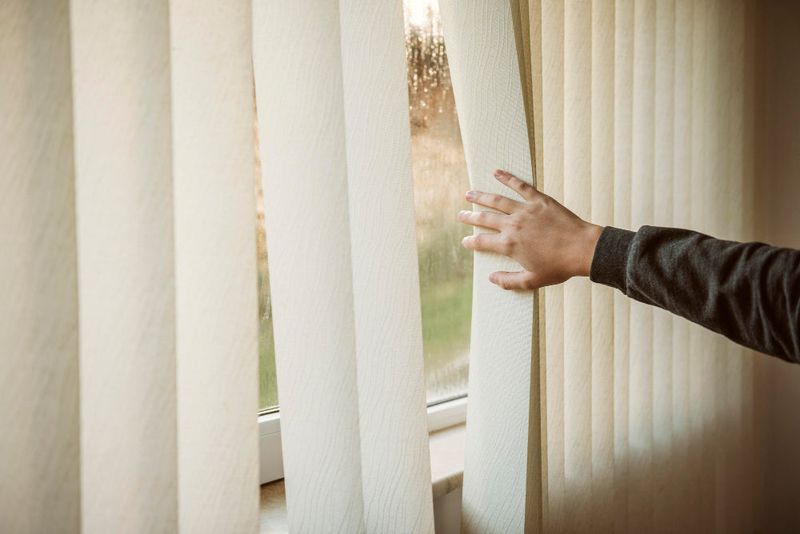
Vertical blinds continue to rank among buyers’ most immediately noticed negative features when touring homes. These plastic strips invariably show their age through yellowing, warping, and broken slats that owners gave up replacing years ago.
Functionality problems plague even newer installations. Constant tangling, uneven hanging, and noisy operation create daily frustrations that buyers have no interest in inheriting.
Aesthetic limitations further diminish appeal, as these utilitarian window coverings clash with virtually every design style. Current buyers already factor replacement costs into offer prices when encountering vertical blinds, typically allocating $150-300 per window for new treatments. Homes featuring these dated window coverings throughout consistently receive lower offers than properties with updated window treatments, with the market penalty increasing with each additional window requiring replacement.

